



















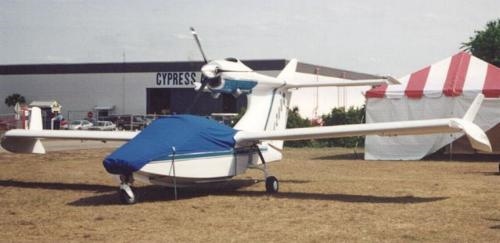
(Photo above courtesy of Leon Pesche)
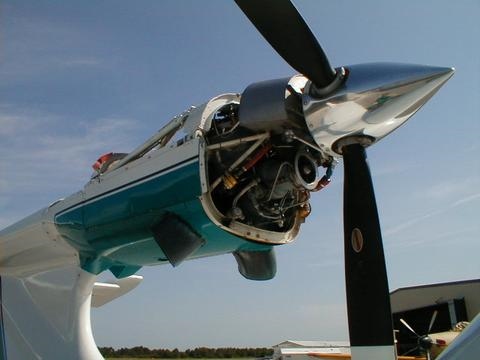
Allison turbine engine installed on a Seawind
(photo courtesy of Doug Karlsen)
The Turbine Seawinds:
There are at least three Seawinds flying with Allison turbo-prop engines. In
spite of the problems encountered in adapting engine to the airframe, and visa
versa, they are magnificent machines. There are at least two other turbine
Seawinds currently being built, both by ISPA members. Not everyone is using the
Allison turbines. Others being adapted include the Pratt & Whitney PT6A-20. What follows is an extremely brief and limited
discussion about the turbine Seawinds.
John Hare's Seawind. Powered by the Allison 250-B17 turbine
engine.
Built with assistance from Turbine Design Inc.
(The ISPA is a small informal organization of Seawind enthusiasts.
We have no formal affiliation with either SNA Inc. or Turbine Design Inc.)
Because of the reliability and high power available from turbine engines in
such a small and light package, turbines are a likely power plant for the
Seawind. Some turbine power plants produce upwards of 550 HP. Almost as soon as
the Seawind kit arrived on the scene, those who were familiar with turbine
engine applications started designing and adapting these engines to the kit.
The early leader in turbine adaptation was Doug Karlsen of Turbine Design
Inc. Doug completed three turbine Seawinds using the Allison 250-B17 engines. Turbine Designís first completion was featured in Popular Science, and plowed
a lot of new ground for the turbine Seawind enthusiasts and pilots (also see the
"Seawind Piloting" page on this site).
Turbine Designís first completion was featured in Popular Science, and plowed
a lot of new ground for the turbine Seawind enthusiasts and pilots (also see the
"Seawind Piloting" page on this site).
Of course, early on, to the newly founded SNA company trying to bring a newly
designed kit plane to market, the turbine applications added complication to the
already monumental task at hand. Understandably, in an effort to limit their own
liability (among other things I'm sure) they denounced the whole turbine engine
venture. Also understandably, since SNA has not undertaken the hugely expensive
engineering effort necessary to redesign the Seawind kit for a turbine
application, they still do not support the application of a turbine engine to
their airframe.
Nevertheless, there are builders who can see the excitement wrapped up in
such an undertaking, and continue to push the envelope. This is what
experimental aircraft are all about. The ISPA seeks to support and promote these
builders in any way we can (however limited our support may be).
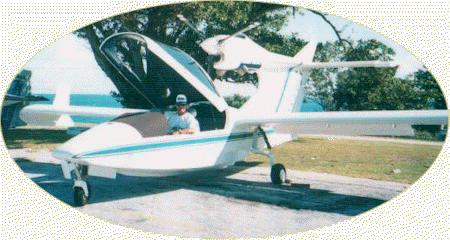
Jorge Ortiz's Turbine Powered Seawind

Following the ISPA
posting of this page, our ISPA members sent the additional information
that follows. The ISPA wishes to thank Doug Karlsen (Turbine Design, Inc.) for
adding the clarification shown in blue.
Turbine Design had several bolt-on Allison kits available.
Engines and cowls were from NOMADS. [Following some turbulent times over the adaptation
of the turbine engines to the Seawind,] Turbine Design became un-interested.
The Allison weighs quite a bit less than the Pratt PT6A-20, but
has a forward facing intake which houses a compressor wheel that turns 55,000
RPM and is more vulnerable than the PT6. The Walter is configured essentially
the same as the PT6. Turbine Design is putting the Walter engines in many a/c
(check their web site).
The
Allison weighs 195 lbs. The Lycoming weighs about 469 lbs. The Pratt weights
about 375 lbs fully dressed. Weights are reported differently depending on the
accessories attached to the engine. The Walter weighs 440 dressed. This
statement about he compressor wheel spinning at 55,000 rpm is not true. The
highest RPM of the Allison is about half that, not that it really matters. I
would say that the Allison weighs about half the Lycoming. And also about half
of the Pratt. A little less than half of the Walter. The Walter is not a
candidate for the Seawind, and we really never considered it an option.
I would not think that there is a great advantage in trying to
install a Walter in a Seawind, except they are cheaper than the PT6's. The Walter would have tremendous excess power, which in the Seawind
airframe would be unusable. Turbines are a little "peaky," meaning
that they run better at the RPM for which they are designed. You can run at
something less than design RPM, but they are less efficient.
[Turbine] fuel efficiencies are such that they may compare
generally well against the reciprocating engines. They will do this at altitude
and being realistic about the whole thing...I rather like the idea of flying
over a lot of the weather. I would flight plan for 22,000 to 24,000 FT. The
service ceiling of the Seawind with the PT6A-20 is right at 37,000 FT. This is,
of course, a good reason to put 2-60 cubic ft. Oxygen bottles in the nose
compartment and get rid of the ballast. All the rationale may prove to be
interesting!
We
had one of the Turbine Seawinds up to 15,000 ft, but I expect that that would be
the limit. The little Allison C model starts to run out of air at that point. I
would say that your Lycoming powered Seawinds, would probably not make it much
past 10,000 ft. All things being equal, the Seawind would handle about the same
at 10k with the piston and at 15k with the turbine. I would say that the service
ceiling with PT6-20 will be about 22,000 ft. and it won't handle very well above
that. This opinion is based on my experience with PT6 on King Airs, and
replacing those engines with Walters.
We
installed the Allison on the Seawind only because of the weight. That was the
most important thing to us. In those days, we only knew what we ourselves had
tested. Paul Array's plane was about 2500 lbs. In those days, the max gross was
3200 lbs. Paul had 110 gallons of fuel storage. That is 660 lbs, and if he
filled the plane up with fuel, he couldn't get in it. Never mind that the plane
needed ballast if he was solo. [Also see the page about "Gross
Weight" in the builder tips section of the ISPA site. ed]
My
customer, Gerard Pesty, didn't need a plane that he couldn't fly if he filled it
with fuel. That was the reason we started looking at a lighter engine. At some
point, much later, we felt that we could lighten and stiffen the plane if we
built it out of carbon. At least that was the test, to build a fuselage only
from Carbon. (That of course, as we all know, turned into a 5 year
lawsuit, that continues to this day.)
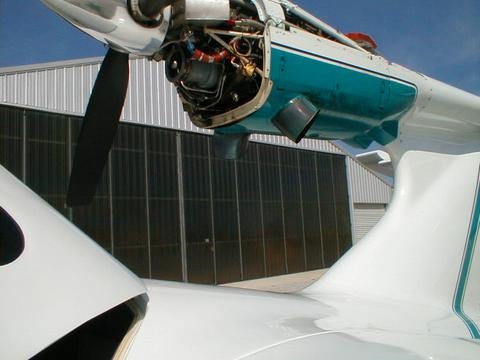
Another view of the Allison turbine engine installed on a
Seawind
(photo courtesy of Doug Karlsen)
One
of the problems that you mentioned is the fact the the prop hit the mid deck. We
could take care of that if we cut the prop down to 76 inches, as the Seawind
piston takes (I think) but we would rather use a 78 inch prop, and instead,
teach pilots not to get into the violent porpoising in the first place. [Please
note that problems with porpoising are not only encountered in turbine Seawinds,
but all Seawinds and seaplanes. Porpoising is a piloting issue. Also see the
page about Seawind "Piloting" on the ISPA site. ed]
That
is where we [Turbine Design, Inc.] are at at this time [early 2003]. One of the
benefits of using Carbon fiber, would be a much stiffer plane. Have you ever
grabbed hold of your Seawind on the trailing tip of the float, and given it a
good shake. The fiberglass / vinyl-ester combination, although a good material,
is very elastic. Carbon would stiffen the plane, and if it didn't flex as much,
we might find that the prop would be held away from the mid-deck better during
very violent nosedives. [The obvious trick here is to improve the
stiffness while retaining sufficient elasticity to withstand the beating that an
amphibious aircraft is subjected to during water operations. We won't know
unless (or until) more research and design development is done on the Seawind,
and under the current circumstances, this seems highly unlikely. ed]

The following is provided in an effort
to address or clarify some of the observations
listed on the Turbine Design Inc. web-site.
Since completing the three Allison powered Seawinds, Turbine
Design Inc. has stopped their turbine adaptations to Seawinds. Several reasons
are sighted on their website. In spite of the criticisms found on their site,
there are still many of us who feel the Seawind is an exciting and worthwhile
endeavor. Right or wrong, what follows is some of our reasoning. We provide the
information so you may draw your own conclusions.
As with any experimental kit plane design, there are limitations
that ISPA builders continue to find innovative and elegant ways to deal with. In
the Builder tips section of this site, there is a page entitled "Seawind
Gross Weight" that addresses existing weight limitations. In spite of it's
huge comfortable cockpit, the Seawind is still and airplane, and requires
careful and prudent planning with regard to weight and balance.
Furthermore, when equipped with auxiliary fuel tanks, the
Seawind has a huge fuel capacity. It cannot be flown with full fuel tanks except
in some very limited circumstances, but flying with fuel tanks at full capacity
is not often required. As most pilot experience bears out, the fuel tanks almost
always outrange the human bladder anyway. Of course, the following quote also
applies: "The
only time an aircraft has too much fuel on board is when it is on fire."
(Sir
Charles Kingsford Smith, sometime before his death in the 1920's.)
As with any airplane, the gross weight limitation is largely a factor of
landing weight. If takeoff gross weight is pushed to 3400 or 3600 lb, and flight
planning allows for flying off fuel to reach the 3200 lb landing specification,
the Seawind does indeed become practical for many of us.
As for freeboard capability (also sighted as a limitation on the
Turbine Design Inc. site), the following photo (of a piston powered Seawind) gives a pretty good
illustration. Of course, in rough water, prudence would dictate that the canopy
be kept closed. Note also that there are large wing sponsons that add flotation
at the wing tips and prevent tipping.
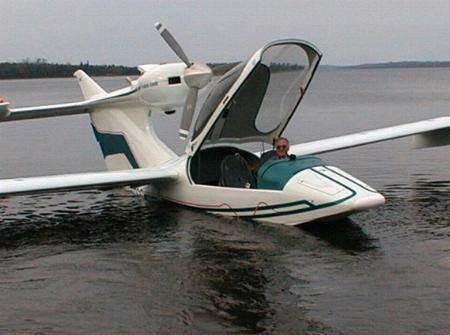
Terry Goodyear's beautiful Seawind, C-GTSG. (This is NOT a turbine powered
Seawind.
This picture appears here to illustrate the amount of freeboard on a Seawind.
See text above.)
We expect that this page will be a work in progress. As the ISPA
turbine builders move forward with their projects, they will provide
more information about this fascinating facet of the Seawind community. Please
check back to this page from time to time. If any of you have additional turbine
Seawind information and/or photos that you could share with us, please send
them in. Above all, fly safe.




















